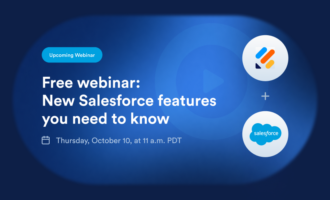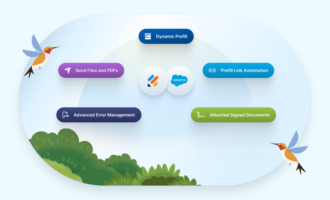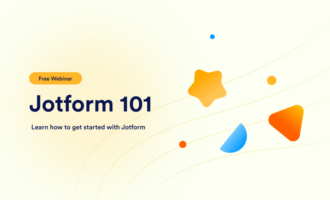Here at Jotform, we’ve said it before and we’ll say it again: We couldn’t be more proud of our product. We’ve built everything at Jotform from the ground up internally (rather than outsourcing or acquiring products), so it’s especially humbling to know that 18 million users and counting have put their faith in our forms, tables, apps, approvals, and more. We even use Jotform extensively ourselves. So when it’s time to build a new product, we stop at nothing to get it right.
But how do we do that?
Our approach to developing products begins with our users. We listen to what they have to say about Jotform, collect their feedback, and rely on it to shape what we create. The problem is never a lack of ideas, but rather, narrowing them down to what we want to prioritize — deciding what product or feature to work on next.
This is where user interviews can help determine what needs stand out from the rest. The usage numbers themselves also tell a story: Take the example of our recent launch for Jotform Sign, our new e-signature product.
“We looked at people who were using our signature field, and we were surprised [by how many there were],” says Aytekin Tank, founder and CEO of Jotform. “We were actually an e-signature company, and we didn’t even know it until we looked at the numbers.”

That led to the decision to develop Jotform Sign, which was just the beginning of the journey. Once a new product or feature is decided on, a single product team is tasked with building it — a process that takes months or even years to complete. In the case of Jotform Sign, it was the latter.
“We’ve been working about one and a half years [on Jotform Sign],” says product manager Sefa Yilmaz, who helped steer the development of Jotform Sign for the Muse Team.

One of the critical initial steps for product development is to understand the positioning of the product in the market. What will make the product different, unique, or valuable to users? It’s important to settle on this positioning up front, because it will impact design decisions down the road and help provide a clear roadmap for the developers to follow.
We positioned Jotform Sign as the best automation product for e-signatures. By leveraging Jotform’s existing suite of automation features, we could make Jotform Sign a powerful tool capable of almost completely automating the e-signature experience. This became the ultimate guiding vision for the product throughout its development.

Building any new product entails a substantial amount of trial and error. As the product’s scope expands, the team solves problems, finds new ones, then solves those in an ever-repeating cycle. Eventually, we develop a minimum viable product that’s functional enough to go into beta testing.
This is where many more problems are discovered and solved. During beta testing, the product is released to a small batch of users who are able to test it in its most basic form. They give valuable feedback that the product team uses to help steer their final stages of development, fine-tuning aspects of the product up until launch.
And launch day is what it’s all about — what the developers work tirelessly for.
“The last couple months, I paused my life and did everything for this product,” says Mert Malcaci, senior UI developer for the Muse Team.
But it’s worth it. Every launch is a time of jubilation at Jotform, especially when it’s a product as big as Jotform Sign. Jotform even threw a party for the whole company to celebrate the launch and the tremendous effort that went into it.

The work doesn’t stop here, though. Most product teams continue supporting their products well after the launch, so the Muse Team will still be working on Jotform Sign for many months to come. They’ll implement new features, fix any bugs that are reported, and streamline the product so it’s the best it can possibly be. After all, when you’ve dedicated years of your life to something, you’d want nothing less.
“When I see people talking about our product, it’s a really great thing. We’re happy about it,” says Malcaci.
This same philosophy of continuous improvement for our products permeates our entire mission at Jotform.
“We have a responsibility to the 18 million Jotform users who are using our product,” Tank says. “And they expect us to advance the product, improve it all the time, and that’s what we’ve been doing these 16 years [we’ve been in business].”
This is just a brief glimpse of our approach to product development at Jotform. There’s actually much more to it. Check out this podcast with our founder and CEO, Aytekin Tank, to hear more about how we build and launch new products like Jotform Sign.
Launching new products or services for customers is one of the most important things any business can do, and the process can vary dramatically by industry. How does your own approach to the creation process differ from ours? Feel free to leave a comment below — we’d love to hear all about it.







































































Send Comment: